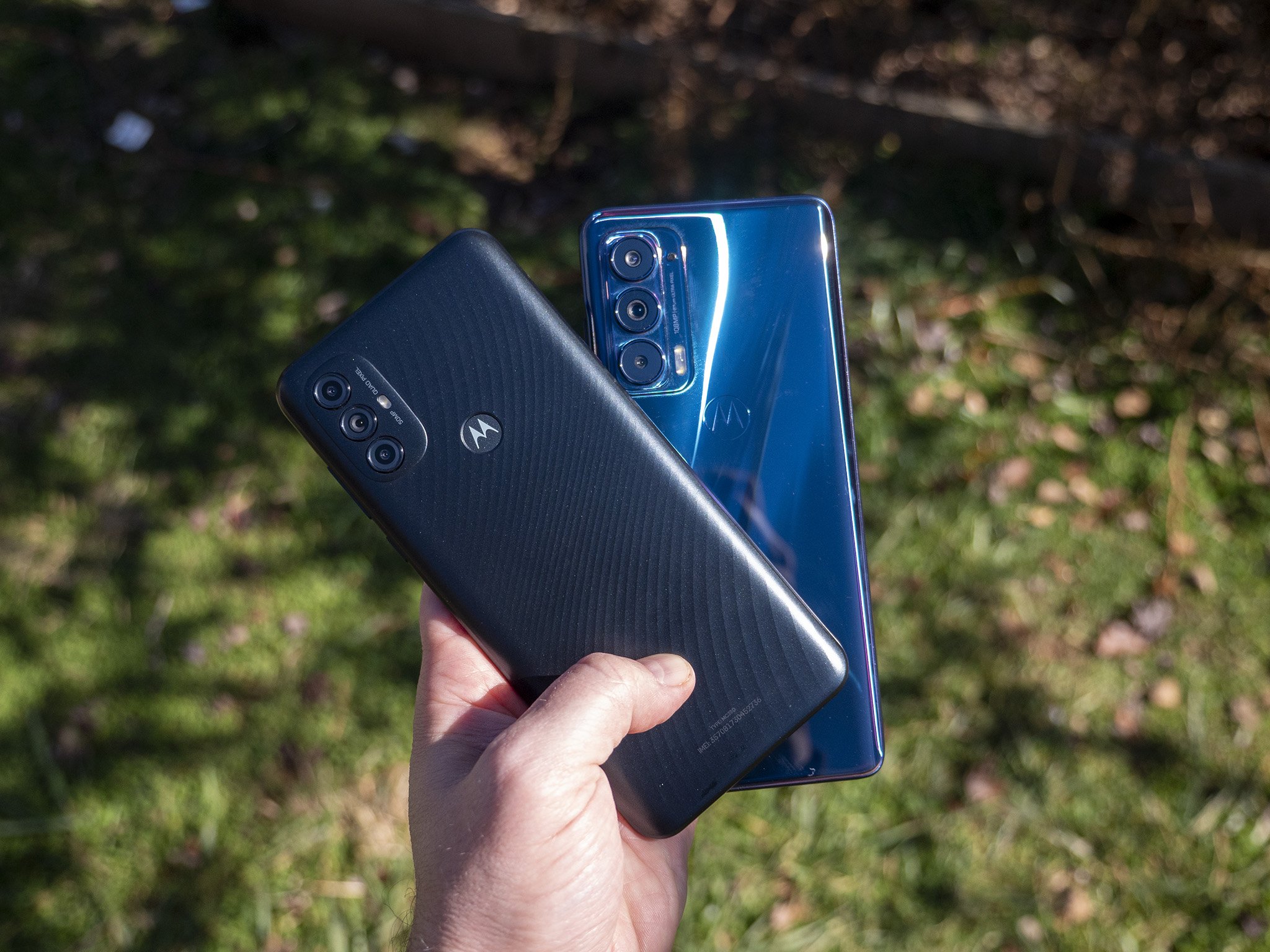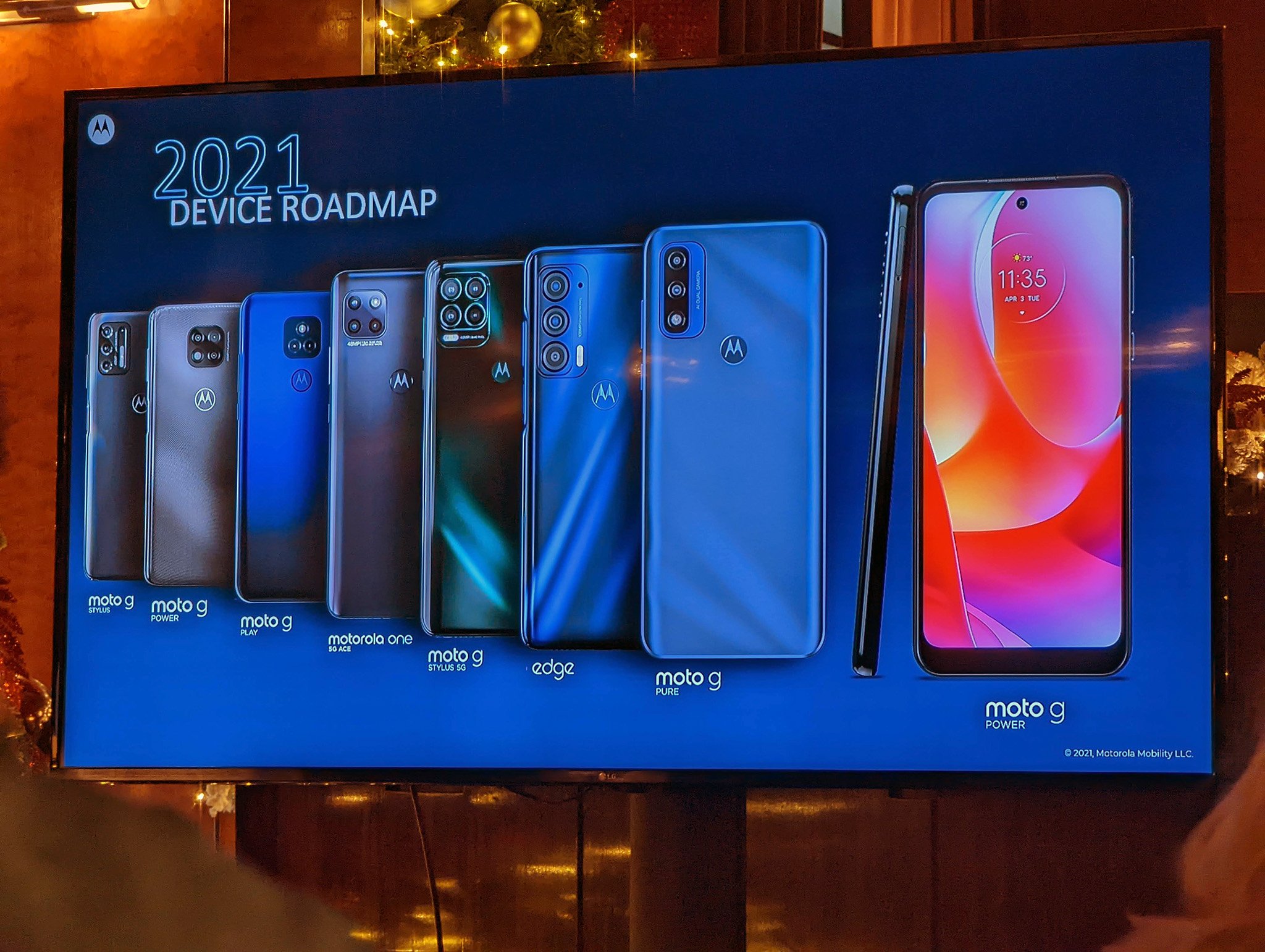Motorola phones just make me sad.
Let me start off by saying that I was a huge LG fan. And I'm still quite bitter that we won't see another LG smartphone. The loss of LG left a void not only in my heart but also in the mobile industry, with Samsung and Apple continuing to rein in their perceived duopoly. At the same time, the smaller guys like Motorola struggle to pick up the scraps of market share in the U.S. But while Motorola has claimed LG's former spot as the third-largest OEM in the U.S., it doesn't feel like the company is really making much of an effort to win over consumers.
Each company seems to be going about it in different ways, with varying results. OnePlus vying to be the alternative to Samsung's Galaxy phones, Sony content to carve out a niche with expensive phones targeting content creators, and Motorola focusing its efforts on the budget segment.
Yet while I respect Motorola's hustle to make a phone for everyone, I can't help being disappointed every time the company announces a new smartphone for the U.S. market. Even on Black Friday, when Motorola's phones are even more affordable than ever, I find it difficult to actually recommend its devices to anyone.
In fact, if you're looking for any good Black Friday Android phone deals, you'll do best to spend a little bit more money on the other guys that appear to be putting effort into their devices.
I say this because it's hard not to feel like Motorola is doing the bare minimum when it comes to the mobile industry. Motorola showed off its 2021 lineup at a recent launch event for the new Moto G Power (2022), and absolutely none of the devices look remotely interesting. You can barely tell that the Motorola Edge (2021) is the more "flagship" device among them.
I recently had the unfortunate pleasure of reviewing the Moto G Pure, and it was purely a dull phone that I struggled to find anything nice to say about. And even with the recently announced Moto G Power (2022), I can't help but feel like it's a downgrade from the 2020 model despite the higher refresh rate. Motorola also missed the opportunity to include 5G, which you're starting to find in more devices at the same price point.
Then there's the horrid update policy, with most of its phones only being promised one major OS upgrade. Even LG, which wasn't known for timely updates, left the mobile industry this year with the promise of three years of updates for its latest smartphones. And sure, we have yet to see this play out in any way, but at least it's there in writing.
Motorola can't even commit to putting NFC in its phones, which is ridiculous to the point that even the Bay Area Metropolitan Transportation Commission (MTC) refused to support its phones for mobile ticketing due to "inconsistent experiences with Motorola phones." That doesn't bode well for the company if it wants to be taken seriously as the new No. 3 Android OEM in the U.S. — and it doesn't seem like Motorola really cares.
According to Counterpoint Research, while Motorola benefited from LG's exit in the market, so did OnePlus. This was largely driven by its affordable OnePlus Nord N200 5G, which is one of the cheapest 5G smartphones you can buy in the U.S., and the only real competition to Motorola. However, with only a handful of models available in the U.S., OnePlus is taking the quality-over-quantity approach to the U.S. market as opposed to Motorola's strategy, which has turned into a massive midrange sludge.
And then there's Sony, which mainly stuck to what it knows by targeting the premium market, so it's not really there to compete with Motorola.
"Sony has refrained from hurting its balance sheet and continues to offer premium devices, which are more parallel to its premium 'quality' maker brand image," says senior analyst at Counterpoint Research, Hanish Bhatia.
Sony doesn't expect to sell a lot, but because it's honed in on its target audience, Sony can ultimately afford to stay under the radar in the smartphone space while iterating and improving on what it does best.
Android Central's Nick Sutrich recently interviewed Doug Michau, executive director of North American business development at Motorola, which made it fairly clear that Motorola merely into third place in the U.S. market. However, this "slow and steady" way of tackling the market risks allowing companies like TCL to catch up and surpass it.
The interview highlighted how Motorola was banking on its long-standing brand name to help drive its sales, a point echoed by Bhatia.
The company's legacy as a communication device brand goes back decades when U.S. consumers had their first experience of a handheld device in the 1980s. Motorola has been able to leverage its decades of experience in the U.S. market to reach a wider consumer base through channel partnerships from urban hubs to sub-urban and rural areas. It enjoys a healthy market share in prepaid channels such as Boost Mobile, Cricket Wireless, and Metro by T-Mobile, while it also has a strong presence in Target, Walmart, and other retail channels.
However, he noted that Motorola's attempts at the higher-end tier with devices like the new Motorola Razr series have failed to stick with consumers in a market that is "highly skewed toward Apple and Samsung." This is due to different demographics and a postpaid presence that Motorola just doesn't have.
Perhaps this is why Motorola seems hesitant to throw its full weight behind a proper flagship phone in the U.S., and why we have yet to see a follow-up to the Motorola Razr 5G. Display Supply Chain Consultants (DSCC) reported that the company is pushing the release to the second half of 2022, which could be attributed to the chip shortage but also to the company trying to "re-invent their foldable design."
However, Motorola could risk falling into the same trap as LG. Bhatia explained that before LG's exit, the company was "continuously trying to redefine the brand and find higher share in the premium segment" while putting out passable flagship phones that undercut Samsung's Galaxy devices and also trying to go its own way with foldables.
It's time Motorola put actual effort into its phones. All of them.
This led to fairly awkward dual-screen attachments, even more awkward hand gestures, and the interesting but ultimately underwhelming (and underpowered) LG Wing, which drove R&D and marketing costs up. This amount of experimenting made it seem like LG was just throwing things against the wall to see what stuck, which ultimately led to the company's demise.
We've already seen from Samsung that the clamshell design is one that customers like, so there's no reason for Motorola to try and reinvent the wheel, especially if it wants to bank on the Razr moniker. If Motorola plans to release another foldable next year, it needs refine what it already has, give us truly flagship specs, and a price to match or beat the Galaxy Z Flip 3. However, it also needs to provide much better value from not only its flagship offerings, but its budget phones as well, and improve the update policy on all of its smartphones, lest it fall victim to the same criticisms that befell LG. And for Christ's sake, put NFC in your phones.



Tidak ada komentar:
Posting Komentar